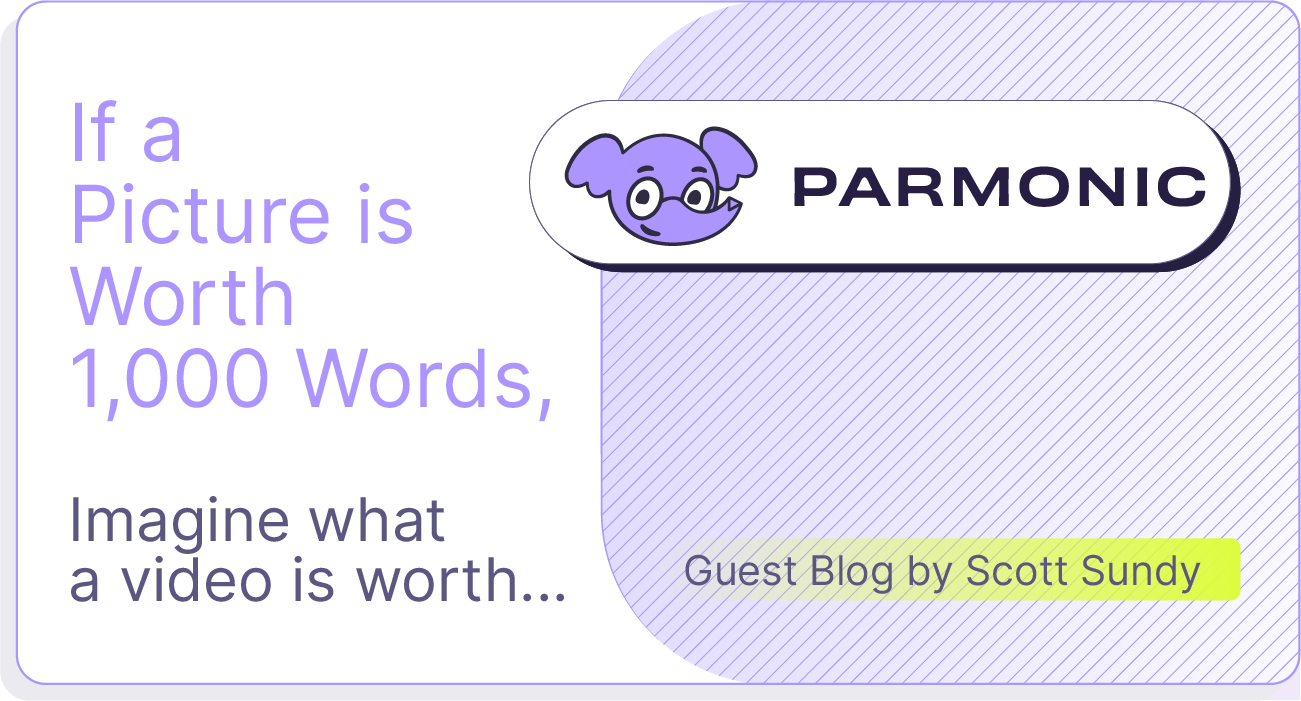A Picture Is Worth A Thousand Words
If a picture is truly worth ‘1,000 words,’ then how many words is an amazing video worth?
As humans struggle to keep pace with rapid technological advancements (and pandemic-driven social constraints), one thing is certain: video-based content continues to be the #1 preferred format for business engagement.
Video is King
A recent Bright TALK survey found that 81% of respondents chose webinars as their main source of content, with virtual events (59%) and short videos (57%) not far behind.
Similarly, it’s no secret that major news and media outlets have been gradually reducing their writing staffs, while ramping up video production and sharing efforts. I’ve definitely noticed this trend in my news feed with less written articles and more video snippets.
While videos and webinars are not new, they’ve become increasingly relevant since the COVID-19 pandemic forced businesses to find alternate ways of connecting virtually with customers and prospects. Just like the boom in e-commerce and online retail, another inadvertent effect of the pandemic has been even more rapid digital growth.
So, the implications for marketing and sales are vast. It’s critically important to embrace video-based channels and content for each phase of the buying cycle and sales funnel. Furthermore, it’s no longer necessary to utilize expensive production studios to create a professional video. According to a Vidyard survey, over 60% of 2020 videos were user-created (as opposed to externally created), and this number is expected to continue to increase.
Your Video Has Been Uploaded
More and more businesses are using low-cost DIY methods to create videos and quickly syndicate this content via assorted online and social channels. This represents a seismic shift from just a few years ago when it was typical for video post-production to take weeks. In our 24/7/365 media world, the importance of very quickly being able to stand up new bits of video content cannot be overstated.
How quickly are you able to create compelling new video and get it into-market? What kinds of existing content can be re-purposed to further meet your video content objectives? How can you address your buyers and influencers’ pain points succinctly through video, along with your company’s solutions? If you’re not asking yourself these questions, you could be missing the boat.
Something else to consider is how the pandemic, social isolation, and resulting ‘remoter evolution’ has affected our brains (and attention spans). Despite working from the cozy confines of home, many WFH-ers are spending even more time in front of their laptops…navigating double-booked calls, endless emails, and nonstop Teams chats – and oh-by-the-way, still need to help the kids with homework and cook dinner.
By spreading our focus so thin, it’s only natural that the human attention span has been decreasing – especially in recent years. The latest science has demonstrated that average human attention span is about 8 seconds – about the same as a goldfish!
This Is Your Brain on Video
Additionally, it’s now been proven that humans have inherently negative reactions and feelings when working through their inboxes. A groundbreaking study from B2B Decision Labs measured user reaction (monitored brain waves, galvanic skin response, eye movement, pulse rate) from reading several different types of emails (plain, text-only, and embedded video).
Remarkably, participants reacted noticeably more positively and happier from reading the video email, despite having identical text as the other versions. Some other key takeaways were increased retention of information in the video email, as well as eye movement that corresponded with instructions from the video narrator ('watch this,' or 'if you notice over here,' etc.).
Emails with embedded short video, concise text, and dynamic elements led to recipients being in a much more ‘positive mental state’ than other traditional email formats. Additionally, the video emails were proven to demonstrate increased retention and CTA motivation ('act now') afterwards.
Sales and Self-Learning
A growing new trend in video-augmented email is the use of 1:1 ‘explainer’ videos in sales. As b2b buyers continue the trend to self-educate before ever speaking to a rep, it’s no surprise that this type of approach has increased by over 50% since 2019, according to the Vidyard 2021 Video in Business Benchmark report.
Much like webinars, we’re seeing a shift towards on-demand viewing that enables prospects to learn about your features and benefits on their terms, and on their time. So, it definitely behooves organizations to capitalize on this trend of digital transparency and look to expedite pre-sales efforts through enhanced video-based self-learning.
References:
1 BrightTalk 2021 Benchmarks Report
2 Vidyard 2021 Video in Business Benchmark Report
3 B2B Decision Labs (2021): Standing Out in the Inbox: The Neuroscience of Selling with Video Email



